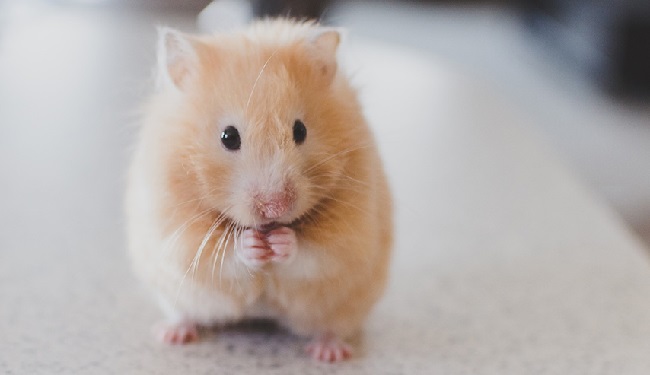As pet owners, we often find ourselves intrigued by the variety of sounds our little furry friends make. If you’re a hamster owner, you might have noticed these creatures are not just cute but also quite vocal.
Understanding hamster sounds can significantly enhance your bonding experience and provide insights into their health and wellbeing.

7 Hamsters Noises and Their Meanings
In this article, we will explore 7 hamster sounds and their meanings.
1. Chirping
Chirping is a common sound that hamsters make, often indicating excitement or interest. If your hamster chirps when you’re about to feed it or play with it, it’s likely expressing enthusiasm.
2. Squeaking
Squeaking or high-pitched shrieking is often a sign of fear or distress. If your hamster makes these noises, it’s essential to identify any potential stressors in their environment and address them promptly.
3. Purring
When a hamster purrs, it usually indicates a state of contentment. This sound often happens when you’re petting your hamster, signaling they’re comfortable and happy.
4. Hissing
Hissing is an unmistakable warning signal. If your hamster hisses, it’s likely feeling threatened and may become aggressive if the perceived threat continues.
5. Chattering Teeth
Hamsters chatter their teeth as a sign of irritation or warning. If you hear your hamster chattering its teeth, it’s best to give it some space.
6. Whining
Whining or whimpering sounds are usually a sign of discomfort or dissatisfaction. It could be a response to an unfamiliar situation, a new food, or an uncomfortable change in temperature.
7. Clicking
Clicking sounds can suggest a range of emotions, from curiosity to alertness. If your hamster is clicking while exploring a new toy or environment, it’s likely intrigued by its surroundings.
Decoding Hamster Noises: A Deeper Dive
Understanding these basic hamster sounds provides a solid foundation, but remember, context is everything. A sound’s meaning can change depending on the situation, the hamster’s body language, and other behavioral cues.
It’s essential to spend time with your pet, observing and learning to understand its unique communication style.
Hamster Sounds and Health
Sometimes, changes in your hamster’s sounds can indicate health issues. Persistent squeaking, for instance, might suggest your hamster is in pain. If you notice any drastic changes in your hamster’s sounds or behaviors, it’s advisable to consult a vet.
Hamster Sounds and Sleep Patterns
Hamsters are primarily nocturnal creatures, which means they are most active during the night. Consequently, the majority of their vocalizations will occur during this period.
If your hamster is particularly vocal at night, it’s not a cause for concern but merely a reflection of its natural behaviour.
Hamster Sounds and Social Interactions
If you own more than one hamster, you might notice a broader range of sounds, especially when they’re interacting.
Hamsters use sounds to establish social dynamics, assert dominance, and show submission. Noticing when and how these sounds occur during their interactions can give you insight into your pets’ relationships.
Handling Your Hamster
Knowing how your hamster communicates through sound is important when handling them. If you notice a hissing or teeth chattering sound when you reach for your hamster, it might be best to give them some space before trying to handle them. Misreading these sounds could result in a bite or stressful experience for your pet.
Sound as a Tool for Bonding
Listening and responding to your hamster’s sounds can also serve as a great bonding tool. For example, if your hamster purrs when you stroke them a certain way, continuing this action shows your pet that you understand their likes and dislikes. This understanding can strengthen your bond and make your hamster feel safe and loved.
Can Hamsters Hear Each Other’s Sounds?
Hamsters have a keen sense of hearing and can communicate with each other using their variety of sounds. This form of communication is especially prevalent in the wild, where communicating danger, territory, and readiness to mate is vital for survival.
So, if you have multiple hamsters, they’re likely ‘talking’ to each other in a language all their own!
Remember, understanding your hamster’s sounds takes time and patience, but it’s a rewarding process. It offers an enriching way to interact with your pet, ensuring they are happy, healthy, and comfortable in their environment.
Conclusion
Learning about your hamster’s sounds can lead to a deeper understanding and connection with your pet. Every chirp, purr, or hiss is part of your hamster’s unique language.
So, listen carefully, and you’ll unlock a whole new world of communication with your little furry friend. Remember, while this guide helps decode basic hamster sounds, each hamster is an individual.
Your hamster may have unique ways of expressing its feelings, which you’ll discover as you grow your bond together. Happy listening!
























